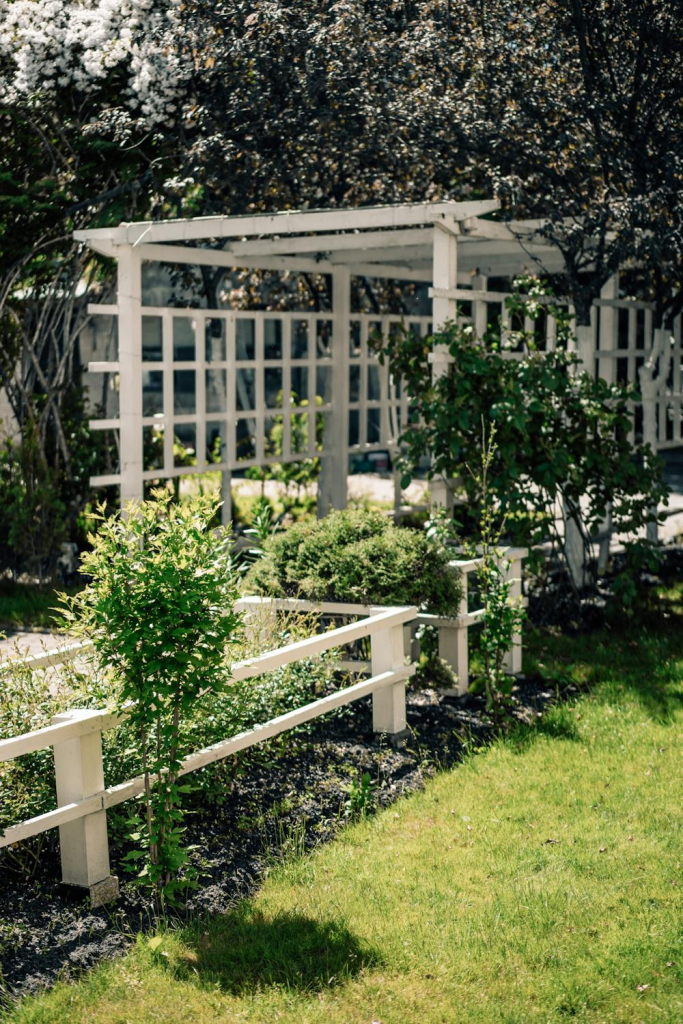Building a pergola that can withstand Australia’s diverse climate requires careful planning, appropriate materials, and practical features that allow year-round use. From sweltering summers to chilly winters, a well-designed pergola should offer comfort, shade, and protection no matter the season. Below is a comprehensive guide to creating a pergola that stays functional and durable throughout the year.

Read more for additional tips and expert advice on building pergolas that last.
Choose Durable, Weather-Resistant Materials
The foundation of a long-lasting pergola begins with selecting the right materials. Timber is a popular choice due to its aesthetic appeal and natural insulation. Hardwoods such as Merbau or Spotted Gum are particularly favoured for their resistance to decay and pests, although they require regular sealing to maintain their appearance and integrity.
Treated pine offers a more budget-friendly option with decent durability when properly maintained.
Popular material choices include:
- Merbau and Spotted Gum for high durability
- Treated pine for budget-conscious projects
- Galvanised steel and aluminium for corrosion resistance
- Polycarbonate or Colorbond roofs for UV and weather protection
Design With Year-Round Adaptability
A pergola must be adaptable to suit changing weather conditions. One effective feature is an adjustable roofing system. Louvred roofs allow you to control the amount of sunlight and airflow entering the space. At the same time, retractable awnings or canopies allow for the opening or covering of the area as needed. These features enable you to enjoy your pergola, whether sunny or rainy.
For additional protection, consider side enclosures. Retractable blinds or heavy-duty weatherproof curtains can shield you from rain and wind. Sliding or folding glass panels offer protection and maintain visibility and a connection to your outdoor surroundings. These enclosures make the pergola more versatile and extend its use into colder months.
Ensure Solid Footings And Drainage
Stability is crucial for any outdoor structure. Concrete footings for each post ensure the pergola remains grounded during strong winds or heavy rainfall. Galvanised brackets should be used where timber meets the ground to prevent moisture damage and rot.
Drainage is equally essential. Poor drainage can lead to water accumulation, which eventually weakens the structure. Surfaces should be slightly sloped to direct water away, and nearby drains should be positioned to manage runoff. Installing gutters and downpipes helps prevent water from pooling on the roof, thereby avoiding leaks and deterioration.
Add Features For Comfort In All Seasons
Comfort is a key component of a year-round pergola. In cooler months, heating options such as wall-mounted electric heaters or gas patio heaters can make the space more enjoyable. Built-in fire pits not only provide warmth but also serve as a stylish centrepiece.
To combat heat during summer, install ceiling fans to promote airflow or consider a misting system for a refreshing effect. Lighting also plays a role in year-round use. LED downlights are energy-efficient and long-lasting, while solar-powered lights work well in areas exposed to ample sunlight, offering an eco-friendly option for nighttime use.
Consider the following comfort upgrades:
- Ceiling fans and misting systems for summer
- Electric or gas heaters and fire pits for winter
- LED and solar lighting for evening use
Maintain Regularly For Longevity
Ongoing maintenance is essential for keeping your pergola in top condition. Cleaning the structure with mild soap and water helps to remove dirt and prevent mould or mildew buildup. Timber should be inspected regularly for signs of rot or insect damage, and protective finishes such as sealants or stains should be reapplied as needed.
Recommended maintenance tasks:
- Clean surfaces monthly to prevent build-up
- Inspect timber for cracks or rot quarterly
- Tighten bolts and replace any rusted fittings annually
- Reapply timber treatments every 12-18 months
Landscaping And Shading Options
Incorporating plants and privacy screens adds functional and aesthetic value to your pergola. Climbing plants like wisteria or grapevines offer natural shade and insulation. When guided along a trellis or climbing mesh, they grow quickly and create a lush, green canopy.
Privacy screens from timber or aluminium slats provide wind protection and a secluded atmosphere. Bamboo screens add a unique tropical flair and also act as practical windbreakers.
Seasonal Adjustments For Comfort
Each season presents its challenges and opportunities. In summer, fabric shades and good ventilation can keep the area cool. Opt for light-coloured furniture and avoid surfaces that absorb too much heat. During winter, heavy curtains and windproof blinds help retain warmth. Plush cushions and outdoor rugs add comfort and style.
Spring and autumn strategies:
- Use mixed open/closed elements to handle fluctuating temperatures
- Refresh planter boxes with seasonal blooms
- Adjust soft furnishings for comfort and aesthetic appeal
Add Smart Pergola Features
Technology can enhance the convenience of your pergola. Remote-controlled louvres and blinds allow for easy adjustments without leaving your seat. Smartphone integration enables control over lighting and roofing systems with just a few taps.
Sensor-based features add another layer of adaptability. Rain sensors can automatically close louvres or blinds when precipitation begins, and light sensors adjust the brightness of your lighting based on the time of day or weather conditions.
Final Checklist For Building A Year-Round Pergola
- Choose durable, weather-resistant materials like hardwoods or galvanised steel.
- Install adaptable roofing systems such as louvres or retractable canopies.
- Add heating for winter and cooling systems for summer.
- Use retractable blinds or glass panels for side enclosures.
- Ensure proper drainage with sloped surfaces and gutter systems.
- Maintain regularly with cleaning and structural checks.
- Incorporate innovative features for convenience.
- Enhance comfort and aesthetics with plants and privacy screens.
Conclusion
Building a pergola that endures every season requires strategic decisions regarding materials, design, and upkeep. By using robust materials, incorporating adjustable features, and committing to regular maintenance, you can create an outdoor space that remains inviting and functional all year.
Whether you’re seeking shade in summer or warmth in winter, a well-planned pergola offers a dependable, stylish extension of your home.
Frequently Asked Questions
What Is The Best Material For A Pergola That Needs To Last Through All Seasons?
Hardwoods like Merbau and Spotted Gum are ideal due to their durability and natural resistance to pests and decay—aluminium and galvanised steel offer excellent weather resistance and low maintenance for coastal or wet areas. Polycarbonate or Colorbond roofing also adds year-round protection from the sun and rain.
How Can I Keep My Pergola Comfortable During Winter?
To maintain warmth, consider installing electric or gas heaters and adding windproof blinds or curtains to block cold air. Fire pits are an excellent option for both warmth and atmosphere. Using weather-resistant rugs and cushions helps create a cosy space even during colder months.
Do I Need Council Approval To Build A Pergola?
Council approval is needed in many parts of Australia if your pergola exceeds a specific height or area or is attached to your home. It’s essential to check with your local council for regulations before construction begins to avoid fines or future issues.
